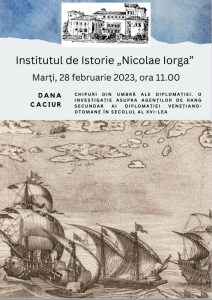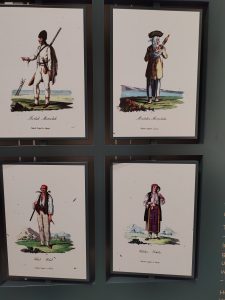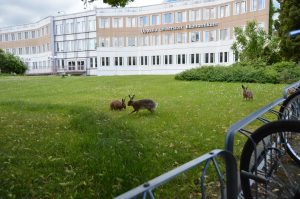Comunicare la conferința Politics and society in Central and South-Eastern Europe. Multicultural diversity and accessibility from ancient times to the present găzduită de Universitatea de Vest din Timișoara în perioada 19-21 mai 2023
Titlul comunicării:
Invitații la nuntă și daruri pentru prieteni. Construcția relațiilor diplomatice venețiano-otomane în Dalmația secolului al XVI-lea
(Shadowy faces of diplomacy. Building the Venetian-Ottoman Relations in Sixteenth century Dalmatia: gifts for friends and some wedding invitations)
Abstract:
Comunicarea mea și-a propus să prezinte și să analizeze construcția relațiilor diplomatice venețiano-otomane din Dalmația secolului al XVI-lea prin prisma analizării schimburilor de daruri. Prin cercetarea pe care am desfășurat-o pentru realizarea acestui studiu de caz am avut în vedere trei aspecte cheie. În primul rând am urmărit identificarea și explicarea ritualurilor și regulilor de interațiune dintre venețieni și otomani, prin exemple bogate în detalii referitoare la întâlnirile dintre oficiali, comportamente și reacțiile generate. Apoi am investigat natura produselor oferite ca dar și proveniența lor. În al treilea rând, cercetarea îi evidențiază pe indivizii locali care îi însoțesc pe trimișii Venețieni, pe mesageri sau ambasadori în drumul lor spre Bosnia sau înspre alte locuri administrate de otomani, ajutându-i prin cunoașterea rutelor, sau a dialectelor locale dar și cu protecția pe durata călătoriei. Relevante pentru acest studiu de caz sunt și ocazionalele invitații la nuntă trimise de sangeac-beii otomani din Bosnia conților și căpitanilor venețieni din Dalmația și recomandările de răspuns ale Senatului venețian. Instanțele invocate în contextul schimburilor de daruri dintre oficialii venețieni din Dalmația și cei otomani din Bosnia evidențiază tot atâtea mecanisme și instrumente de „colaborare și coexistență” în regiunile de margine ale celor două puteri evidențiind caracterul performativ al interacțiunilor.
































